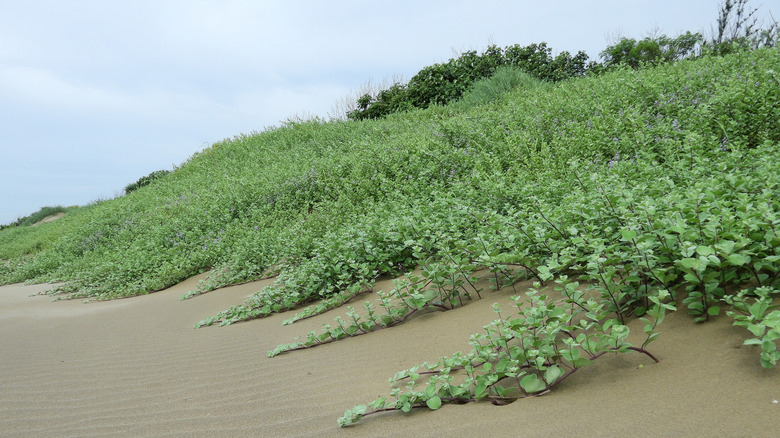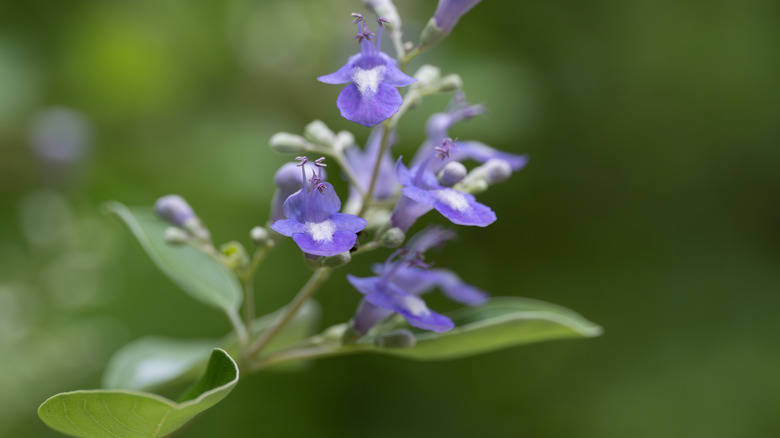The Hardy Ground Cover Shrub That You Might Not Want To Grow In Your Garden
In coastal gardens, hardy ground covers can be a blessing, but there's one you might not want to grow in your garden. Imported from Asia in the 1980s, this fast-growing, vine-like shrub was introduced across the southeastern United States to stabilize dunes and dress up beachfront landscapes. But its resilience became a liability. Today, beach vitex (Vitex rotundifolia) has been banned or regulated by many local ordinances.
At a glance, it's easy to believe beach vitex is one of the perfect plants to grow if you live in a tropical environment. It grows in USDA hardiness zones 6 to 10, and these flowering plants that thrive near the coast grow in sandy soils, resisting wind, salt, and drought. In spring, it produces spikes of bluish-purple flowers that attract butterflies, and its thick foliage creates a lush ground cover. But behind its good looks lies a fast-spreading invader. Once established, beach vitex can take over entire dunes and coastlines, crowding out native species that stabilize sand more effectively and support local ecosystems. Worse still, it forms a tangled mat of runners and roots that are extremely difficult to remove.
Despite its popularity just a few decades ago, beach vitex is now classified as a noxious weed in North Carolina and Florida. Conservation groups have spent years removing it from public and private properties, and researchers continue to document its risk as a species. Even in gardens, its aggressive spread and potential to escape cultivation make it more trouble than it's worth.
Why beach vitex poses a bigger problem than it solves
The very traits that make beach vitex a hardy ground cover also make it difficult to control. Its creeping stems root at every node, forming dense mats that outcompete native plants for light, water, and space. These thick canopies block nearly all sunlight from reaching the ground, smothering dune grasses and preventing seed germination. Worse, the leaves and fruit release compounds that make the surrounding soil repel water, intensifying drought stress for other species.
Native dune builders, like sea oats and American beachgrass, trap windblown sand, slowly rebuilding dunes with every gust. Beach vitex traps less sand, resulting in lower dune profiles and weaker coastal defenses. And because it forms an impassable barrier of woody stems and thick foliage, beach vitex also disrupts nesting for endangered sea turtles and growth of rare plants like seabeach amaranth (Amaranthus pumilus), which need open sandy patches to survive.
Removing beach vitex is far from easy. It must be cut back and treated with specialized herbicides, and even then it can resprout from fragments left behind. Disposal requires care to prevent re-rooting, and replanting with native species is necessary to restore dune stability. For modern gardeners, it's best to skip planting beach vitex altogether and consider a well-adapted native ornamental grass for your yard ground cover like sea oats (Uniola paniculata) or seaside little bluestem (Schizachyrium littorale).

